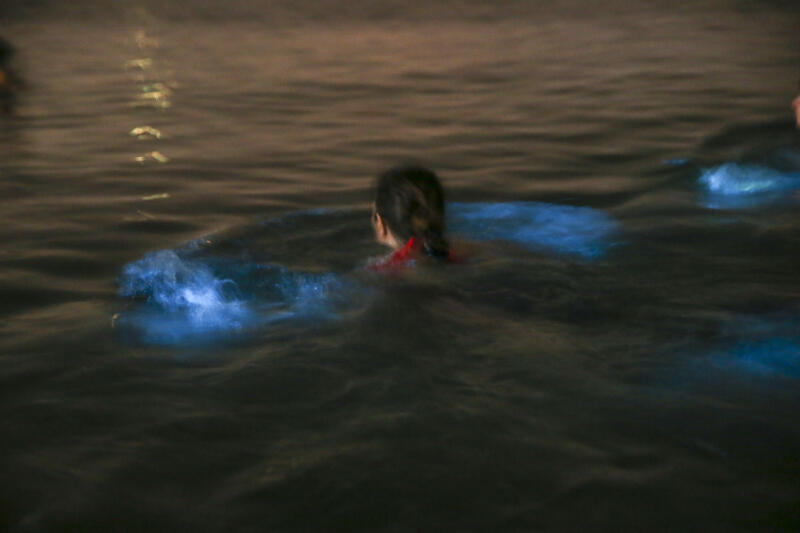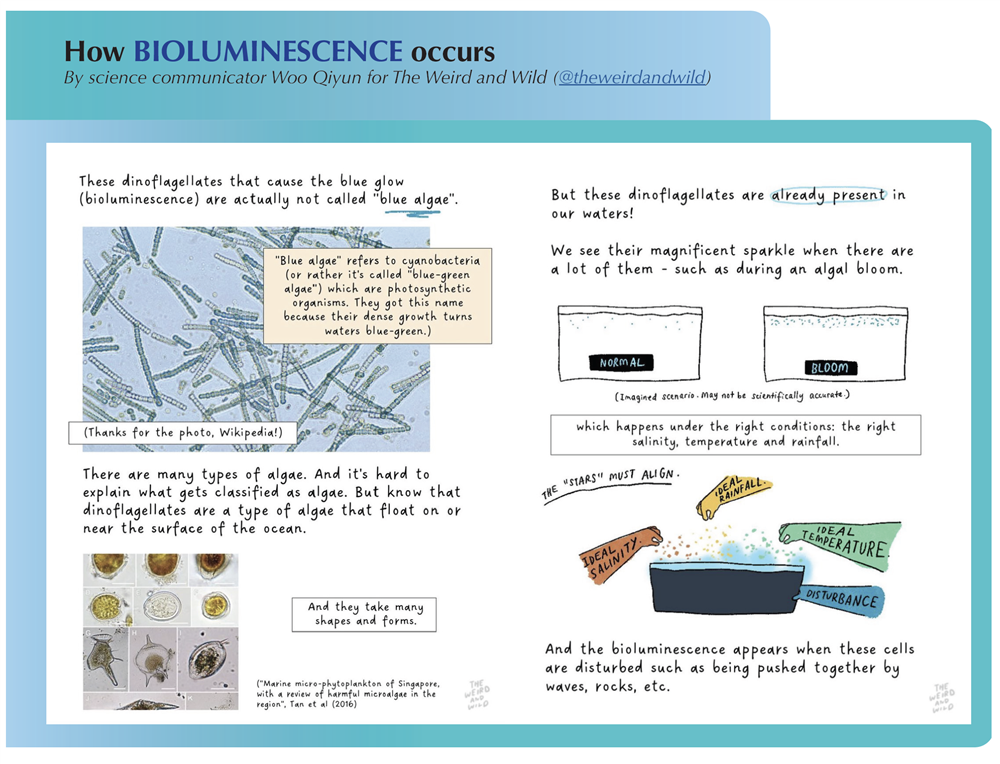Rare bioluminescent algae put on light show in Singapore’s waters
A dazzling but fleeting display of blue as A/Prof Rebecca Case glided across the water in Changi Beach. The beaches were still empty as Prof Case collected samples, a stark contrast to the crowds that would flock there over the next few days.

Ever had a magical swim like this? After Straits Times’ interview with SCELSE PI A/Prof Rebecca Case,
hundreds flocked to the beaches for a glimpse of this beautiful sight.
- Featured
- 20 May 2022
Singaporeans were treated to a rare phenomenon in late March – a bloom of bioluminescent dinoflagellates – microscopic marine algae that drift in the ocean. The dinoflagellate responsible for this glow was identified as Noctiluca scintillans by the National Parks Board.They produce a luciferase enzyme which reacts with oxygen, resulting in bioluminescence.
While dinoflagellates are not uncommon in our waters, it takes a combination of factors such as the right rainfall, salinity and temperature, to result in a bioluminescent algal bloom.
Prof Case suggested that the recent monsoon season and warm weather may have contributed to this event.
The glow was most prominently seen in Pasir Ris Beach and Changi Beach, with many heading down with their families to witness it for themselves.
While this glow may be beautiful, there could be harmful impacts on our ecosystems as well. An overgrowth of the algae may negatively impact the marine ecosystem by reducing the oxygen supply, and therefore suffocating other organisms, explained A/Prof Case.
She told Straits Times (ST): “It would therefore be important to be able to know what environmental factors would result in such extreme events, and be able to mitigate their negative effects. But much more research is needed before predictive technology becomes possible.”











